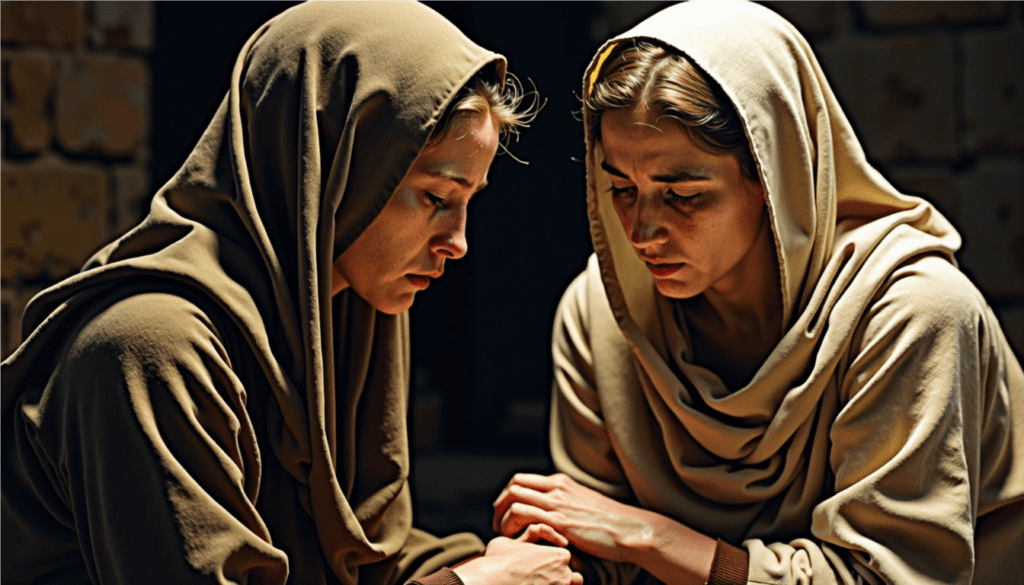The story of Lazarus in John 11 stands as one of the most dramatic miracles in the New Testament. While many know the basic narrative—Jesus raises his friend from the dead after four days—there are profound insights beneath the surface that speak to our human experience today. This miracle, performed near the end of Jesus’ ministry, wasn’t just a display of divine power but a multi-layered teaching moment that continues to resonate across centuries.
The Purpose of Delay in Divine Timing
One of the most striking aspects of the Lazarus story is Jesus’ deliberate delay. When messengers inform Jesus that his friend is ill, his response seems almost callous: “This illness does not lead to death; rather it is for God’s glory” (John 11:4). Then, rather than rushing to Bethany, the text tells us: “Though Jesus loved Martha and her sister and Lazarus, after having heard that Lazarus was ill, he stayed two days longer in the place where he was” (John 11:5-6).
This intentional delay reveals something profound about divine timing. Jesus wasn’t being cruel or indifferent—he was operating within a different framework of time and purpose. What seems like neglect from our perspective might actually be strategic patience from God’s viewpoint.
We often measure God’s love by the speed of his response to our prayers. The Lazarus story challenges this assumption. Sometimes the greatest miracles require waiting for situations to develop beyond what we initially hoped for. Had Jesus healed a sick Lazarus, it would have been another healing miracle. By raising a decomposing body, Jesus demonstrated authority over death itself.
In our own lives, we encounter these “not yet” moments frequently. The promotion doesn’t come through. The relationship doesn’t heal instantly. The medical breakthrough seems delayed. The Lazarus narrative suggests that sometimes God’s greatest work occurs not despite the delay but because of it. The question becomes not “Why isn’t God responding?” but “What greater purpose might be unfolding in this waiting?”
Grief as Sacred Space
Perhaps most touching in this account is Jesus’ emotional response: “Jesus wept” (John 11:35). This scene is profoundly theological—the incarnate God standing before a tomb, tears streaming down his face despite knowing the miracle he was about to perform.
Why would Jesus weep when he knew Lazarus would momentarily walk out alive? Biblical scholars suggest multiple possibilities: Jesus was moved by the community’s grief, he was troubled by death’s reality in a fallen world, or perhaps he was experiencing the full weight of human emotion as part of his incarnation.
Whatever the specific reason, this moment sanctifies grief itself. Even when resurrection is imminent, the experience of loss remains real and worthy of acknowledgment. Jesus doesn’t rush past the emotional reality to get to the miracle. He enters the sacred space of collective mourning.
This teaches us that grief isn’t faithlessness. When we experience loss—whether through death, broken relationships, missed opportunities, or dashed hopes—our tears are not evidence of spiritual failure. They are human responses that even Jesus himself validated. Grief creates space where both divine presence and human community can meet us in our vulnerability.
Identity Transformation After “Death” Experiences
Imagine Lazarus’s perspective. While the Bible doesn’t record his post-resurrection thoughts, he experienced something utterly unique—death and return. He went through the ultimate transformation, emerging from the tomb still wrapped in grave clothes, needing the community to “unbind him and let him go” (John 11:44).
This image of Lazarus—alive but still wrapped in death’s garments—offers a powerful metaphor for personal transformation. Major life transitions often create new identities while remnants of our old selves remain. Like Lazarus, we need others to help remove the bindings that no longer serve our new reality.
Think of the cancer survivor navigating life after treatment, the divorcee rebuilding identity after marriage, the addict embracing sobriety, or the bereaved parent finding purpose after loss. Each experiences a type of resurrection while still carrying remnants of the tomb. The Lazarus story affirms both the reality of transformation and the communal process of unwrapping what no longer belongs.
Spiritually, this image reflects Paul’s teaching about putting off the old self and putting on the new (Ephesians 4:22-24). Resurrection isn’t just about coming alive again—it’s about emerging with possibility for a fundamentally new way of being.
Faith That Questions
One of the most honest moments in this narrative comes when Martha confronts Jesus: “Lord, if you had been here, my brother would not have died” (John 11:21). Mary later echoes the exact same words (John 11:32). Both sisters maintain faith in Jesus while simultaneously expressing profound disappointment.

Notice Jesus doesn’t rebuke them for questioning. Instead, these moments of raw honesty become opportunities for deeper revelation. To Martha, Jesus reveals: “I am the resurrection and the life” (John 11:25)—one of the most profound “I am” statements in John’s Gospel.
Their faith wasn’t diminished by questioning; it was deepened through it. The sisters brought their “if only” statements directly to Jesus rather than simply discussing them among themselves. Their honest expressions became gateways to deeper understanding.
This gives us permission to bring our own disappointments to God. Authentic faith doesn’t require suppressing questions or pretending we understand God’s ways. The Lazarus story demonstrates that expressing our genuine confusion and disappointment can actually create space for new dimensions of faith to emerge.
Finding Your Resurrection Story
The Lazarus narrative invites us to locate ourselves within its framework. Perhaps you’re currently in a waiting period, wondering why God isn’t responding as quickly as you’d like. Maybe you’re standing in grief’s sacred space, needing validation that your tears matter. You might be emerging from a death-like experience, requiring community to help unwrap your grave clothes. Or perhaps you’re bringing honest questions to God, wondering where he was when you needed him most.
Wherever you find yourself, the story assures us that death—whether literal or metaphorical—is never the final word. Resurrection remains possible even when situations appear hopelessly decomposed. The God who called Lazarus by name still speaks into our darkest tombs with life-giving authority.
What “grave clothes” might you need help removing today? What apparent ending might actually be positioning you for an unprecedented beginning? The invitation of Lazarus’s story is to trust that even when we don’t understand the timing or process, resurrection remains God’s ultimate response to death in all its forms.

***

Here are links to my blog indexes, which will make it quick and easy for you to find another post to read.
∙ Blogs with a Spiritual Theme
∙ Blogs about Books I Like: Fiction
∙ Blogs about Books I Like: Nonfiction
∙ Blogs for Holidays and Other Special Days
∙ Miscellaneous Blogs
